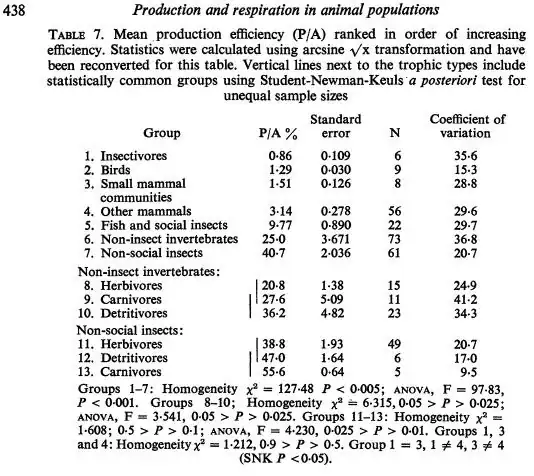The answer is, no. This is called "Linderman's law of trophic efficiency" (Linderman. 1942), but it is far from a law - the reality is that there is a large variety of trophic efficiencies, and these depend on the type of animal and the food being consumed. Linderman's law is a heuristic tool - a concept useful for teaching not strictly based on fact.
a more detailed explaination:
In a simple system, trophic levels are, e.g. plants, herbivores, and carnivores. There are often more levels in the ocean than on land. For example, crustaceans eat algae, fish eat crustaceans, fish eat fish, sharks eat fish. Or cow eats grass, people eat cow.
The question is, of the available food at one level, how much is converted to growth (and can then become food) at the next level. This is the concept of 'trophic efficiency' accounts for both:
- the efficiency at which available resource (food, light) is aquired
- the efficiency with which the light / food is converted to growth
Thus, trophic efficiency =
- (consumed food / available food) x (food allocated to growth / total food consumed) =
- (food allocated to growth / available food)
If a field produces 100 kg of grass each year, and a sheep living on that field gains 5 kg the sheep has a trophic efficiency of 5%. If a human ate 5kg of sheep, maybe they could gain 100 gm. If a human only ate the grass, they would loose weight and such a food web would not exist in nature.
Even Linderman's original work reports a range of trophic efficienciens among the different trophic levels. In Table IV, efficiency. Note that productivity is the rate of growth (mass/time), not total biomass.

A broad syntheses (Humphreys, 1979) demonstrates that indeed, trophic efficiency is related to the type of food eaten and the physiology of the animal consuming the food.
For example, non-social insects can have > 50% efficiency whereas most mammals, birds, and reptiles have < 5% efficiency (Table 7, P/A% is the metric of interest, N is the sample size):


